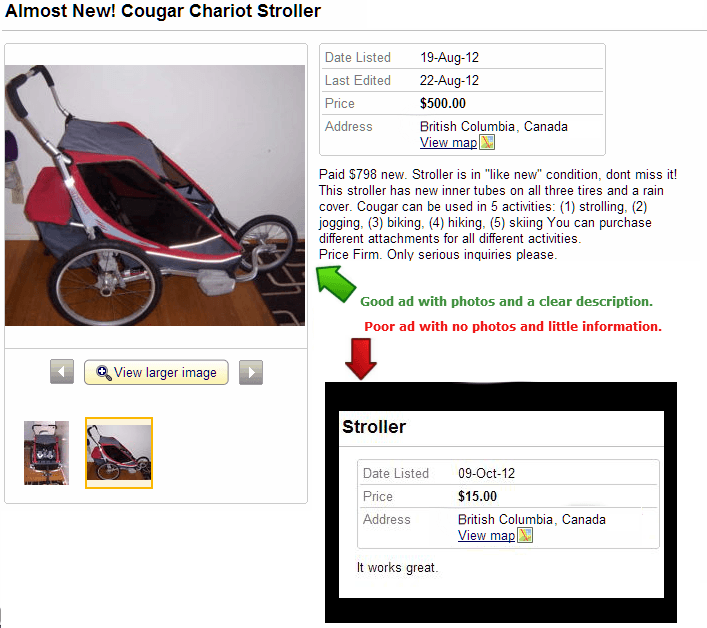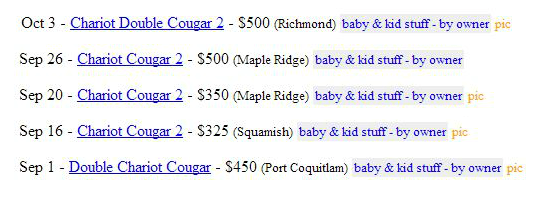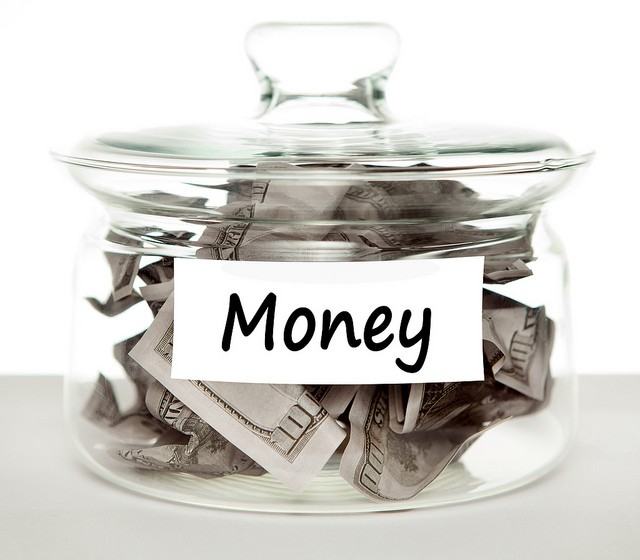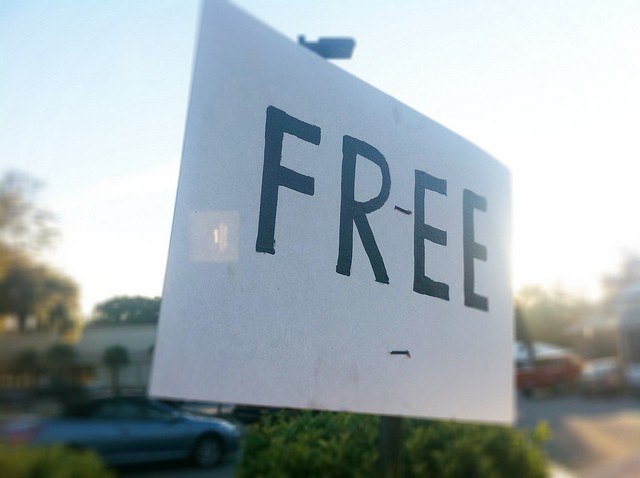Most people that travel for extended amounts of time quickly realize one thing as they’re getting ready for their trip, they have too much stuff! We’ve covered what to do with your things when you travel however, after buying and selling a house worth of furniture twice in the past five years, here are some things that we’ve discovered about selling your things online with sites like Craigslist and Kijiji.
A good ad is like a good post. Just like blogging or having a successful article published, good pictures, a decent ad title, honesty and just enough information to whet your target’s appetite are all requirements for a successful ad.

Twice the exposure for a fraction of the extra work. We always post to both Kijiji and Craigslist. You can make the ads identical so you really only need to do the write-up once. If another online site is more common in your area then post to that site as well. If you slightly modify the heading, you might attract different buyers so if you’re willing to do a little more work, the payoff could include a bigger turnaround. It’s always a good idea to keep a copy of your ad and your pictures offline in case you need to repost them a few days later.
Good pictures make good ads. People like pictures and you will get a better response because of them. You’ll spend less time writing about the item and receive less questions about specifics like color or style. Even Kijiji and Craigslist will tell you a good featured image will attract more attention and get more hits. Make sure the lighting is bright enough to make out everything, but not so bright that any tiny scratches or nicks are highlighted. Depending on the object in question (like couches and tables), take pictures from all sides. Using your tablet or phone’s camera is only good if there is enough light to compensate for its lack of a decent flash. Use your own judgment here.
More pictures. Both Kijiji and Craigslist allow eight pictures to be included. The first picture is usually the featured picture, so choose the first picture carefully. Include at least one picture in every post but as a rough rule I like to include three or four photos. Don’t use stock images unless your item is brand new. Always make the item for sale the main feature in the photo, so don’t use pictures where the item you’re trying to sell is a secondary object (like a photo with you sitting with your friends drinking beer on the couch you’re trying to sell).
Write a great title. The vast majority of people skimming through ads only see your ad title. The title should include a short description and a desirable adjective. Beautiful, clean, good price, priced to sell, unique, classic, comfortable, etc. all give the illusion that what you’re selling is better than the competitors and should be singled out. Don’t include too many details and try to keep what your selling at the beginning of the ad title.
It’s all in the details. If you have it, include all the information you can about what you’re selling in the post. If it’s furniture try to include rough measurements. If it’s an appliance or piece of technology, try to include a few specs. However, don’t just copy and paste a long informational blob and hope someone will buy it. Too much information is as bad as too little and those that aren’t tech savvy will be turned off. Include the main features and anything that you think is relevant. If the pictures aren’t perfect, including the color isn’t a bad idea.
Compare. The first thing you should do is find out what your items are worth. In a big market this is easy as there are several of everything at any moment. If your item is rare or unique or you live in a smaller market, it might be worth it to check sites like eBay or for the the next closest big city. There’s always a chance that something similar is available there. I usually discard the highest and lowest prices of similar items and go with the average if what you’re selling is in good shape. If the item you’re selling is in high demand (for instance a decent couch without anything similar lasting for long) then feel free to raise your price slightly. If you notice a backlog of similar items lasting for weeks then drop your price to compensate.

Judging a book by its cover. Always personalize your ads so it looks like you care enough about it. Looking like you don’t care about your item and just want it gone will make people question why they would want it themselves. If you’re too brusque or rude in your ad people will question how well you took care of it regardless if you’re meticulous or not. If it’s something you love, chances are others will too. Don’t be negative and if there are existing issues with it, be honest but non judgmental.
Clean and in good condition. Sellers don’t want to buy someone’s dirty and ripped cast offs. Your items will sell faster, and for more money, if you wipe off any dirt or mud, remove any obvious stains and fix small rips or tears. The few minutes of work needed to do this will pay off with a faster sale time and usually more profit.
Honesty is the best approach. Don’t lie about your goods or it might backfire against you. Saying that something is in perfect condition or like new to get a few extra dollars when it’s clearly not will only drive buyers away in the long run. Expectation is a strong emotion and those people that were attracted to your ad the most thanks to your claim of great condition will probably be upset and walk away when that proves false. You might attract more buyers but you’ll have more people wasting your time and theirs. You’ll either have to reduce the price or sweeten the deal to make the sale and in the end neither you nor the buyer will be happier for it. If there’s a known issue it might take an extra day to sell but whoever takes the time to come see it will be taking it home with them.
Deposits are fine. A lot of people don’t have trucks or trailers to pick up a larger piece of furniture when they come to look at it. This could result in you having to hold onto something for a few extra days. Unless you need it gone ASAP, get the buyer to leave you a non refundable deposit and commit to an acceptable pickup date. If they’re hesitant to leave money with you, offer them a bill of sale. If they’re still hesitant, tell them honestly you can’t promise you’ll hold it without a deposit and send them on their way. If it’s still for sale in a few days, they can buy it then just like everyone else. If you’re only getting a small deposit make sure you leave yourself with enough time to sell your furniture if the people don’t show up. Because you’ve already gotten a portion of the funds, dropping your price accordingly should ensure a quicker sale.
Compromise. If the buyer can’t take the object with them right then and refuses to leave a deposit, compromise. This works best with large objects like a couch or desk. They pay you in full but they take the cushions home with them now. Alone, neither are worth anything so even if you have to put the couch on the curb when you leave you’ve still got your money and they can guarantee that you won’t turn around and sell the couch out from beneath them.
Money talks. We generally sell to whoever shows up with the money first. Too many times we’ve been burned with people saying they can’t show up for a few days and while we sit and wait we have to turn down a dozen other people wanting to come buy it now. Two days later they email they’ll be there the next day but then don’t show up and don’t have the decency to reply to their emails. We’ve been burned by this too many times and now have a firm policy that we sell to whoever shows up with the money first. We always let people know this when we talk to them so there are no misunderstandings. If they say they’re on their way give them twice the amount of time they say they’ll need to get there. After that, it’s all fair game.

Hold for no one. If people say they can’t come for a few days tell them they can call you before they leave to make sure it’s still available. Tell them you’re on a tight time schedule and you offer no guarantees that it won’t be sold before then. If someone is truly serious, they will find a way to get there earlier or to at least leave you a deposit. We’ve had people send over friends and relatives with the money before the buyer has even seen the goods because they were too busy (or out of town) to come themselves. If you really want it, show me the money! If you don’t want to appear rude, just make sure that you are clear about your holding policy when you first talk to them. If they don’t follow your guidelines then it’s not your problem.
Delivery not included. Some people have no clue when it comes to hauling furniture. I’ve seen couples show up with a tiny car and then trying to fit a couch in the trunk. A few times we had people expect us to deliver something they bought thinking that delivery was included. Though that’s a rare thing, it might be worth it to include a statement of Delivery Not Included at the bottom of any large items you’re selling. For those people that don’t have a transport vehicle, telling them they can just leave a deposit early in the conversation will get them to commit to buying it while giving them a few days to arrange pick up. The good news about deposits is that if you are selling your goods to ease storage costs for future travel, you could have your couch or bed with you right until you leave!
Delivery included. On the flipside, if you happen to have a truck or access to a trailer, offering free or cheap delivery (within reason) can be an easy way to make a few extra dollars with your sale. Most people with small cars know that they’ll have to rent or borrow a vehicle large enough to haul something and that might cost them as much as the item they’re buying. I once made an extra $30 for delivering a couch in the same neighborhood that we lived. Since I had to help load the couch in the first place it wasn’t a big deal to help unload it as well. To top it all off, the extra $30 paid for the beer and pizza I used to bribe my friends in helping me move the rest of my things. $20 seems like the usual local delivery price on Kijiji but you can probably increase the price of the article in question since you will have a higher percentage of people interested.
Repost, don’t edit. Similar to being on the first page of Google for a search, the newest ads that are at the front get the best results. Because ads are automatically sorted by date on Kijiji and Craigslist, when you edit your older ad, it keeps it’s original publication date, and doesn’t move to the front of the search results. You’ll need to create a new ad to put your ad at the top of the listings again.
Editing an older ad saying you reduced your price might attract previous buyers who saved your ad and haven’t phoned you yet, but your best bet is to create another ad. It’s important to note that neither site will let you post two identical ads so you will need to slightly modify the ad title and the ad itself. This can be as easy as flipping the words around or as complicated as rewriting your entire ad. If you haven’t saved your ad someplace, make sure you copy your existing ad before deleting it. If you reword your ad enough, you can post a new ad while keeping your existing ad up. This covers both bases however, on the downside, it lets people know that you’re dropping your price and they might hold off knowing there’s a chance it will be even cheaper in a few days. I do keep both ads up occasionally especially when I had a lot of hits on the original ad and for some reason the article in question hasn’t sold yet.
Removing your ads after sale. One of my biggest pet peeves is calling or emailing about an item that has already been sold. For the same amount of time it takes to reply to an email, the poster could have gone onto the site and either deleted the ad or marked that an item has been sold. I will literally remove an ad as the person who just bought it is driving out of the driveway. I usually include the line “Ad will be taken down the moment it has been sold” so that anyone who’s looking won’t take it for granted that it’s already gone. It also creates a sense of urgency that the product won’t last long so the buyer should hurry up.
To give you an example, I can remember one phone call we got about a leather chair that we were selling. For whatever reason, two people in a row who “claimed it” never showed up and the ad persisted for almost two weeks. Because I thought it had been sold numerous times I never bothered redoing the ad. When the person who eventually bought it called they were quite surprised it was still for sale. They had seen the ad a week before and figured it was already gone. After a few more days their curiosity got the better of them and they decided to call to find out. It turns out the chair was exactly what they were looking for and they couldn’t believe how little they paid for it.
Timing is everything. Though you might have to sell an item by a certain date, deciding on when you sell an item can be crucial to having it all gone by the time you leave. If you check out similar items, their prices and their listed date, you can probably get an idea of how fast items sell. Though most people take down any objects that have sold and sites don’t cache removed ads, if there are a hundred similar items on the market right now then you know that the market might be over-saturated and it will probably take you longer to sell your item. This can usually be fixed by under pricing your item but not always. Give yourself more time to sell it. If it’s a hot item and you want to keep it until the last second then post it accordingly. Just realize that there are no guarantees it will sell in time.
Be there. If your selling deadline is quickly approaching, make sure you’re available for pickup. Most people want what they want when they want it and can get quite annoyed when they have money in hand but no one to give it to. Check your email frequently when you have items for sale and try to be available if someone wants to come see them. On the other hand, missing work for a few hours just to sell a $10 lamp doesn’t add up so use common sense.
Be safe. Deciding how much information to share with a complete stranger can be tricky. I generally only respond to emails and only rarely give my phone number early in the conversation. I prefer having time to craft a proper email response and only then give them my number when they’ve confirmed that they want to come see it. My thought is that if someone has the ability to read the online post, they can reply to the ad. If they give me their phone number I’ll call them when my time is free. Not everyone checks their email regularly so I understand if they want to talk directly. However, it is up to them to make the first move. I also don’t give my personal address until I feel safe enough to do so and will only give them that when they call before coming. I will pass along my neighborhood though and maybe the street so they get an idea of how far they have to drive.
Directions. If I know someone is technical enough (usually they prefer email to phone as well) I’ll pass along a link to my place on Google Maps right before they come. This saves me from having to give directions. If I’m talking to them on the phone and they’re asking directions I always ask them if they have a GPS before spending the next few minutes describing how to get to my place. It’s amazing how many people forget they have one.
Room for negotiation. I generally leave a little room for haggling whenever I sell something. As such, I rarely post something for what I’m willing to let it go for. There’s always the chance someone will buy it for what I’m asking and if not, I have room to entice them. Even if it’s only a few dollars, a buyer will always feel better for having gotten it cheaper than asking price. As long as I get my minimum price I’m happy that the item is being enjoyed by someone else. I generally post items 10% higher than my acceptable price and even then the initial price is usually 5 to 10% less than the average price. If I’m selling something, I’ve already committed to the sale of it. If I can’t get my minimum price then it either goes into storage or gets given away.
Leave it for charity. There’s a certain point when you sell something that you realize that, for the price, you might as well give it to charity. The few dollars you’ll make back are nothing compared to the goodwill you’ll feel knowing someone in need is using it. An added bonus is that most charities will pick it up from you. Just realize that most will need to schedule a date and time and this won’t often work as a last minute plan.
Give it away for free. If your timeline for selling something has come and gone and you need it gone yesterday, posting it as “Free to good home” is a surefire way to get it out of your hair. Though not quite the same as charity, there is a possibility that whoever comes to get it needs it. At the least it’s one less thing you need to worry about. I’ll usually just leave the object outside (with a plastic tarp if it looks like rain is coming) and give the street I’m on in the ad. I also include a “First come first served” message to let people know it won’t last.

Garage sales. Larger or more expensive items like furniture and electronics generally sell for much more on Craigslist or Kijiji than at a garage sale. That said, garage sales are a great way to sell small, inexpensive items that you wouldn’t want to create individual ads for on Craigslist and Kijiji. If time is tight, having to mark all the prices and then wasting a day sitting there as the hordes of people show up might not be worth it. Consider donating the smaller items to charity and posting the bigger items online instead. Of course, having everything gone (regardless of price) within a day has it’s advantages as well.
Small Note. Though I believe this list applies to anyone selling their stuff online, I wrote it with the idea that you’re moving out or away within a week or two and that your stuff has to be gone or stored away by that time. If time wasn’t a factor I would start with a much higher price to test the waters and see if anyone was interested. If no one bit in the first go around, I would repost a few days later with a slightly reworded ad and a lower asking price.
I hope this post helps sell your stuff quicker and it’s all things I myself do (and will be doing in the coming month). Remember, every piece you sell is one less piece holding you back from your travels. It’s also one less thing you need to pay to move and store. If you really need it if/when you come back, you can probably buy something similar to it for a similar price.
You might even do as I did and make money on it! Good luck!






